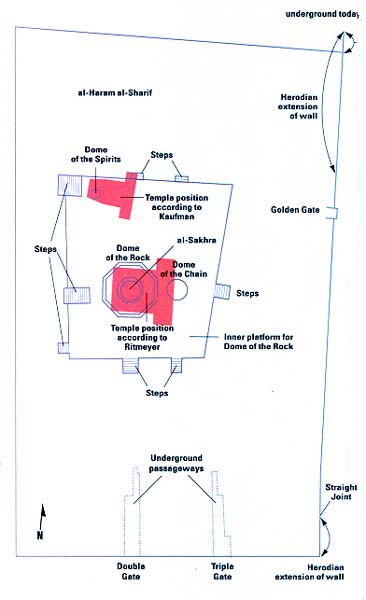Where Was the Temple?
Sidebar to: Sacred Geometry: Unlocking the Secret of the Temple Mount, Part 1

Two main theories have competed in recent years over where the Temple stood in Jerusalem. Asher Kaufman believes the Temple sat on what is now the northwest corner of the inner platform of the Temple Mount, an area marked by a small cupola called the Dome of the Spirits (also called the Dome of the Tablets). Leen Ritmeyer, however, places the Temple to the southeast, with the Temple’s Holy of Holies atop al-Sakhra, the protruding mass of bedrock that gives its name to the Dome of the Rock.
Who is right? We asked David Jacobson to weigh the merits of Kaufman’s and Ritmeyer’s arguments; as it happens, Jacobson has his own view. As outlined in the accompanying article, Jacobson’s argument relies not on tell-tale clues that may lie scattered on the Temple platform, but on large-scale features of Herod’s expanded Temple Mount. Of greatest importance are the shape and dimensions of the perimeter wall that encloses the Mount. When Herod expanded the Temple Mount platform, the line of the eastern wall remained unchanged—it sits high above the Kidron Valley and could not be pushed further east; Herod did, however, extend the eastern wall to the north and the south. The southern extension of the eastern wall is easily discernible: At the point marked “Straight Joint” on the plan, a straight seam in the masonry indicates that the section to the south was a later addition to the wall. From the style of the stones, we know that the section immediately north of the Straight Joint was built before Herod’s time, between the fourth and first centuries B.C.E., during the Hellenistic period.
Already a library member? Log in here.
Institution user? Log in with your IP address.

